
|
There are many historical sites and places in the world that provide us with important insight and evidence of glorious civilizations of the past. These sites help us learn about our ancestors, their living and culture. They can easily be called a common or universal heritage of humankind and our world heritage, and are amazing places to see and explore. |
|
Angkor, Cambodia |
 |
|
Angkor (holy city) is a region of Cambodia that served as the seat of the Khmer Empire, which flourished from approximately the 9th to 15th centuries. The ruins of Angkor are located amid forests and farmland to the north of the Great Lake (Tonlé Sap) and south of the Kulen Hills, near modern-day Siem Reap city, in Siem Reap Province. The temples of the Angkor area number over one thousand, ranging in scale from nondescript piles of brick rubble scattered through rice fields to the magnificent Angkor Wat, said to be the world's largest single religious monument. Many of the temples at Angkor have been restored, and together, they comprise the most significant site of Khmer architecture. Visitor numbers approach two million annually, and the entire expanse, including Angkor Wat and Angkor Thom is collectively protected as a UNESCO World Heritage Site. |
|
|
|
Bagan, Myanmar |
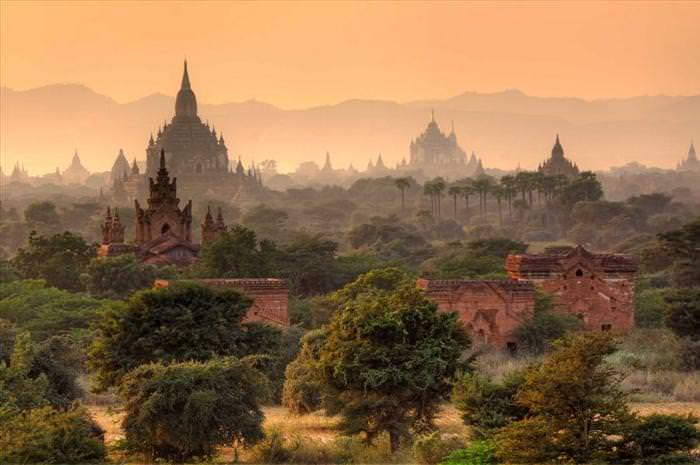 |
| Bagan is an ancient city located in the Mandalay Region of Burma (Myanmar). From the 9th to 13th centuries, the city was the capital of the Kingdom of Pagan, the first kingdom to unify the regions that would later constitute modern Myanmar. During the kingdom's height between the 11th and 13th centuries, over 10,000 Buddhist temples, pagodas and monasteries were constructed in the Bagan plains alone, of which the remains of over 2200 temples and pagodas still survive to the present day. |
|
|
|
Rock Sites of Cappadocia, Turkey |
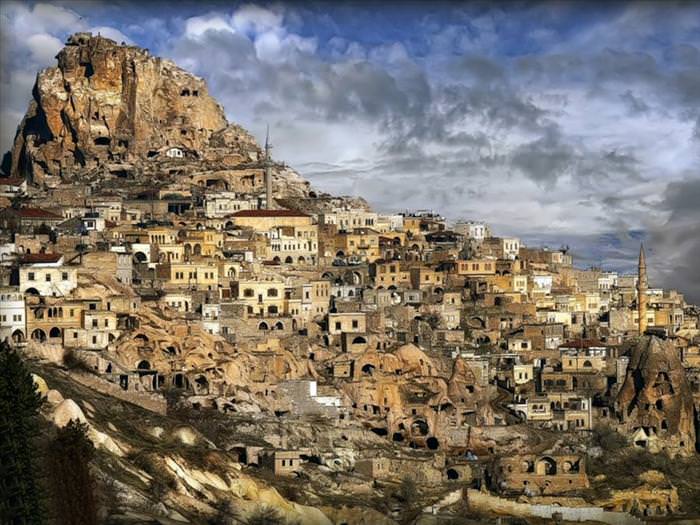 |
|
Cappadocia is a historical region in Central Anatolia, largely in Nevşehir Province, in Turkey. In the time of Herodotus, the Cappadocians were reported as occupying the whole region from Mount Taurus to the vicinity of the Euxine (Black Sea). Cappadocia, in this sense, was bounded in the south by the chain of the Taurus Mountains that separate it from Cilicia, to the east by the upper Euphrates and the Armenian Highland, to the north by Pontus, and to the west by Lycaonia and eastern Galatia.
The name was traditionally used in Christian sources throughout history and is still widely used as an international tourism concept to define a region of exceptional natural wonders, in particular characterized by fairy chimneys and a unique historical and cultural heritage. |
|
|
|
Hampi, India |
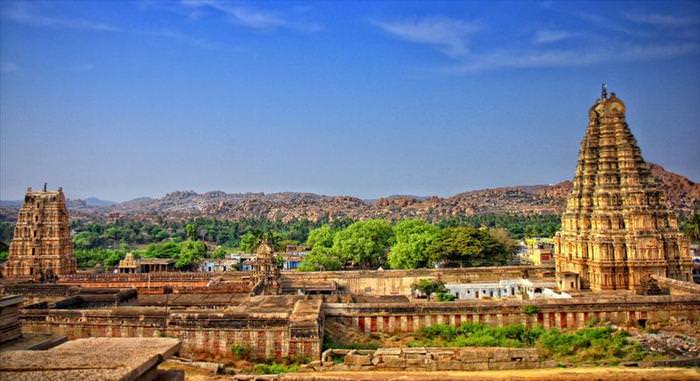 |
| Hampi is a village in northern Karnataka state, India. It is located within the ruins of Vijayanagara, the former capital of the Vijayanagara Empire. Predating the city of Vijayanagara, it continues to be an important religious centre, housing the Virupaksha Temple, as well as several other monuments belonging to the old city. The ruins are a UNESCO World Heritage Site. |
|
|
|
Machu Picchu, Peru |
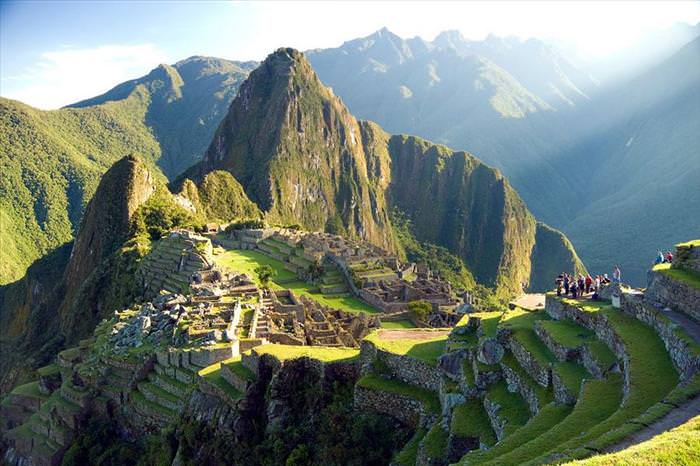 |
|
Machu Picchu ("Old Peak") is a 15th-century Inca site located 2,430 metres (7,970 ft) above sea level. Machu Picchu is located in the Cusco Region of Peru, South America. It is situated on a mountain ridge above the Urubamba Valley in Peru, which is 80 kilometres (50 mi) northwest of Cusco and through which the Urubamba River flows. Most archaeologists believe that Machu Picchu was built as an estate for the Inca emperor Pachacuti (1438–1472). Often referred to as the "Lost City of the Incas", it is perhaps the most familiar icon of Inca civilization.
The Incas built the estate around 1450, but abandoned it as an official site for the Inca rulers a century later at the time of the Spanish Conquest. Although known locally, it was unknown to the outside world before being brought to international attention in 1911 by the American historian Hiram Bingham. Since then, Machu Picchu has become an important tourist attraction. Most of the outlying buildings have been reconstructed in order to give tourists a better idea of what the structures originally looked like. By 1976, thirty percent of Machu Picchu had been restored.The restoration work continues to this day. |
|
|
|
Mont-Saint-Michel, France |
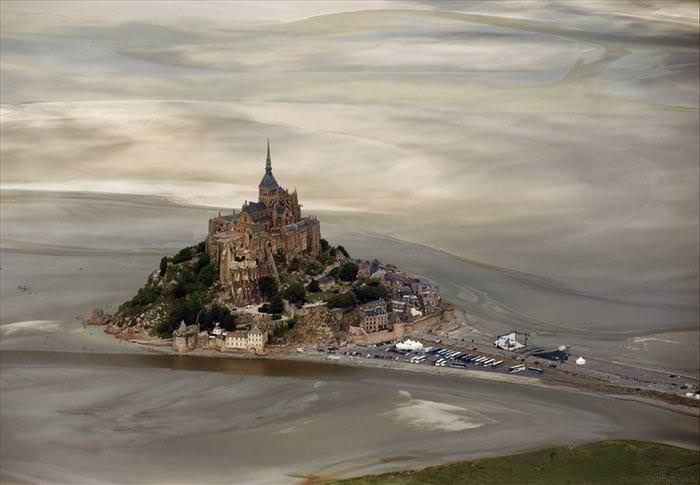 |
|
Mont Saint-Michel is a rocky tidal island 247 acres (100 ha) in size, and is a commune in Normandy, France. It is located approximately one kilometre (just over half a mile) off the country's northwestern coast, at the mouth of the Couesnon River near Avranches. The island's highest point is 92 metres (301 feet) above sea level. The population of the island is 44, as of 2009. The island has held strategic fortifications since ancient times, and since the eighth century AD has been the seat of the monastery from which it draws its name.
The structural composition of the town exemplifies the feudal society that constructed it. On top God, the abbey and monastery, below this the Great halls, then stores and housing, and at the bottom, outside the walls, fishermen and farmers housing. One of France's most recognisable landmarks, Mont Saint-Michel and its bay are part of the UNESCO list of World Heritage Sites and more than 3 million people visit it each year. |
|
|
|
Petra, Jordan |
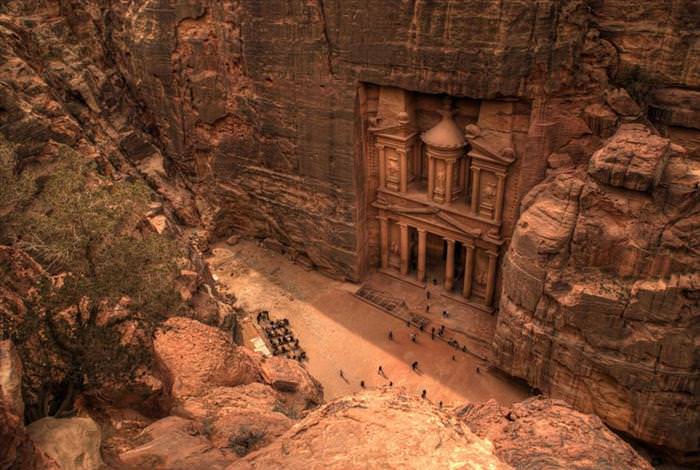 |
|
Petra (Greek Πέτρα Petra, meaning "stone"; Arabic: البتراء, Al-Batrāʾ) is a historical and archaeological city in the southern Jordanian governorate of Ma'an, that is famous for its rock-cut architecture and water conduit system. Another name for Petra is the Rose City due to the color of the stone out of which it is carved. CLICK HERE for our detailed photo series about the beautiful city of Petra. |
|
|
|
Pyramids of Giza, Egypt |
 |
|
The Giza Necropolis ("pyramids of Giza") is an archaeological site on the Giza Plateau, on the outskirts of Cairo, Egypt. This complex of ancient monuments includes the three pyramid complexes known as the Great Pyramids, the massive sculpture known as the Great Sphinx, several cemeteries, a workers' village and an industrial complex. It is located some 9 km (5 mi) inland into the desert from the old town of Giza on the Nile, some 25 km (15 mi) southwest of Cairo city centre.
The pyramids, which have historically loomed large as emblems of ancient Egypt in the Western imagination, were popularised in Hellenistic times, when the Great Pyramid was listed by Antipater of Sidon as one of the Seven Wonders of the World. It is by far the oldest of the ancient Wonders and the only one still in existence. |
|
|
|
Acropolis, Greece |
 |
|
The Acropolis of Athens (Greek: Ακρόπολη Αθηνών) is an ancient citadel located on a high rocky outcrop above the city of Athens and containing the remains of several ancient buildings of great architectural and historic significance, the most famous being the Parthenon. The word acropolis comes from the Greek words ἄκρον (akron, "edge, extremity") and πόλις (polis, "city"). Although there are many other acropoleis in Greece, the significance of the Acropolis of Athens is such that it is commonly known as "The Acropolis" without qualification. While there is evidence that the hill was inhabited as far back as the fourth millennium BC. The Parthenon and the other buildings were seriously damaged during the 1687 siege by the Venetians in the Morean War when the Parthenon was being used for gunpowder storage and was hit by a cannonball. The Acropolis was formally proclaimed as the preeminent monument on the European Cultural Heritage list of monuments on 26 March 2007. |
|
|
|
Rapa Nui, Chile |
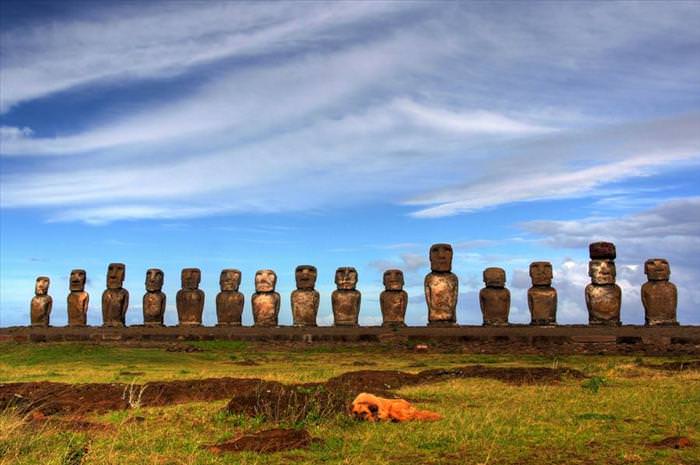 |
|
Easter Island is a Polynesian island in the southeastern Pacific Ocean, at the southeasternmost point of the Polynesian Triangle. Easter Island is famous for its 887 extant monumental statues, called moai, created by the early Rapa Nui people. It is a UNESCO World Heritage Site, with much of the island protected within Rapa Nui National Park. Polynesian people settled on Easter Island in the first millennium CE, and created a thriving culture, as evidenced by the moai and other artifacts. However, human activity and overpopulation led to gradual deforestation and extinction of natural resources, which caused the demise of the Rapa Nui civilization.
By the time of European arrival in 1722, the island's population had dropped to 2,000–3,000 from a high of approximately 15,000 just a century earlier. In recent times the island has served as a warning of the cultural and environmental dangers of exploitation. Diseases carried by European sailors and Peruvian slave raiding of the 1860s further reduced the Rapa Nui population, down to 111 in 1877. |
|
|
|
Sigiriya, Sri Lanka |
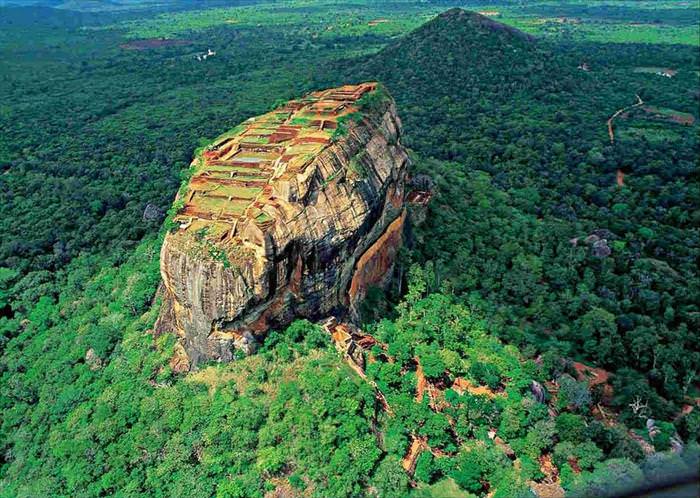 |
|
Sigiriya ("Lion Rock") is located in the central Matale District of the Central Province, Sri Lanka in an area dominated by a massive column of rock nearly 200 meters high. According to the ancient Sri Lankan chronicle the Culavamsa the site was selected by King Kasyapa (477 – 495 AD) for his new capital. He built his palace on the top of this rock and decorated its sides with colourful frescoes.
On a small plateau about halfway up the side of this rock he built a gateway in the form of an enormous lion. The name of this place is derived from this structure —Sīhāgiri, the Lion Rock. The capital and the royal palace were abandoned after the king's death. It was used as a Buddhist monastery until the 14th century. Sigiriya today is a UNESCO listed World Heritage Site. It is one of the best preserved examples of ancient urban planning. It is the most visited historic site in Sri Lanka. |
|
|
|
Tulum, Mexico |
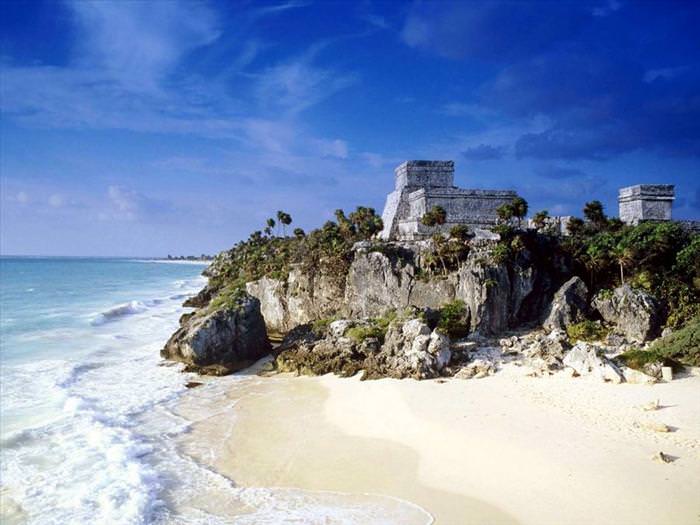 |
| Tulum is the site of a Pre-Columbian Maya walled city serving as a major port for Cobá. The ruins are situated on 12-meter (39 ft) tall cliffs, along the east coast of the Yucatán Peninsula on the Caribbean Sea in the state of Quintana Roo, Mexico. Tulum was one of the last cities inhabited and built by the Mayans; it was at its height between the 13th and 15th centuries and managed to survive about 70 years after the Spanish began occupying Mexico. Old World diseases brought by the Spanish settlers appear to have been the cause of its demise. One of the best-preserved coastal Maya sites, Tulum is today a popular site for tourists. |
|
|
Submitted by: Hanna A.